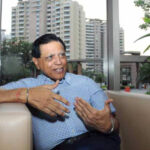ONCE a young IAS officer newly empanelled and promoted as Joint Secretary, obviously dissatisfied with his posting in a not very coveted ministry in the Government of India, came to the Cabinet Secretary and complained about the unfair treatment meted out to him by the government. The Cabinet Secretary leaned back in his chair and said, “My boy, who said that government was fair?” The anecdote illustrates the density of decision-making in personnel management in the government.
Granting that every action of the politico-bureaucratic leadership in the area of postings and transfers of senior functionaries of the Central Government cannot be defended either on logic or propriety, it is still inexplicable why joint secretaries and additional secretaries should be routinely rotated around ministries. Normally a Joint Secretary is carefully selected for a particular ministry by the Appointment Committee of the Cabinet for a normal tenure of five years. In the not-too-distant-a-past, shifting of a Joint Secretary in the middle of his tenure was resorted to in extraordinary circumstances. However, in the present bureaucratic dispensation, it has become a fairly standard practice. Recently in a social gathering, a senior officer quipped that the central government seemed to have started importing dubious administrative practices from the State governments.
This does not mean that I buy the line of reasoning that fixed tenures improve professionalism and ensure better and more unprejudiced performance of civil servants. In fact, for once I tend to agree with Avay Shukla’s argument that more than fixed tenures, they need sturdier spines.
The ambiguity and wooliness of most of our senior bureaucrats is amazing. They generally want to do the right thing, but the fear of losing their positions and perquisites prevents them from getting into open defiance of political masters. The recent cases of officers bending to the dictates from the Minister in the Ministry of Home Affairs are but a reminder of the normal demeanour of bureaucrats. They are precariously balanced between a large measure of integrity and avoidance of conflict with the politician. They are content with the security of service conferred upon them by the Constitution. But they forget what Benjamin Franklin said, ‘he that is secure is not safe’. And, it applies beautifully to the Indian bureaucrat.
The outstanding work being done by many of the civil servants needs to be properly showcased. I am aware of hundreds of creative ideas being converted into people-centric projects implemented by the civil servants in the rural areas of remote districts, which, if splashed in print and videographed in documentaries and films, can change people’s perception of civil services. Recent examples include, thousands of soak pits dug in Sitamarhi in Bihar under the leadership of District Magistrate Rajiv Raushan; free meals provided to everybody in Kozhikode town of Kerala led by the District Magistrate P Nair; Kanchan Verma, DM of Fatehpur in Uttar Pradesh, rejuvenating a dried up Sasur Khaderi river; and, Aishvarya Singh, DM of West Sikkim, succeeding in making her district open defecation free. I am sure there are similar or even more spectacular stories from other services waiting to be told.
We know the mainstream English media will never print these stories unless they were sure that there was something for them in it. In my view, the stories should be brought out in the regional vernacular newspapers and local TV channels. In this context, I came across a coffee table book—aptly titled Recreating Excellence—brought out by the Department of Administrative Reforms and released by the Prime Minister on the Civil Service Day which presumably escaped everyone’s attention. It is like a manual of how to replicate innovative practices of public service developed by civil servants in different parts of the country. Selected cases of initial models followed by successful replicated projects make an interesting reading.
Endpoint: Has the time come for the faceless ‘Babu’ to enter the arena of public discourse without knocking?
The writer was the Cabinet Secretary and the first Governor of Jharkhand. He can be reached at pkumar1511@hotmail.com
































































